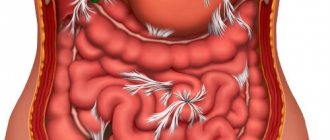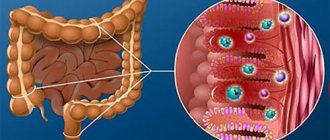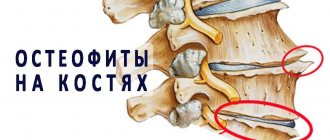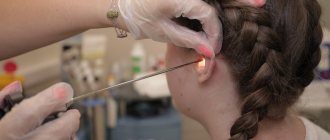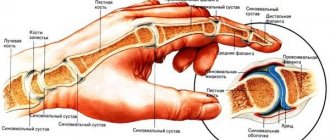Osteoporosis is a serious disease of the skeletal system, characterized by an imperceptible onset and gradual progression, threatening terrible complications. Pathology occurs at any age, but usually in older people. This disease affects females 4 times more often. Therefore, it is so important to notice the first signs of osteoporosis in women in time and take the necessary measures.
New effective methods for diagnosing, treating and preventing the disease have been developed.
Causes of osteoporosis in women
Osteoporosis exists in several types, each of which has its own causes and clinical features. Premenopausal women are characterized by an idiopathic variant, the etiology and frequency of which remains unclear.
Secondary osteoporosis, caused by concomitant diseases or long-term use of pharmacological agents, is much more common. Every tenth woman suffers from this form of pathology.
The causes of bone loss may include the following:
- early menopause (up to 40-45 years);
- late appearance of menstruation;
- infertility;
- hereditary predisposition to osteoporosis;
- fragile constitution (body weight 55-58 kg);
- insufficient or excessive physical activity;
- unbalanced diet with deficiency of calcium and other minerals;
- removal of ovaries before age 45;
- strengthening the function of the thyroid gland of various origins;
- liver and kidney diseases in the stage of decompensation;
- rheumatoid arthritis;
- oncological diseases;
- blood pathology;
- intestinal diseases with impaired absorption of minerals and proteins;
- diabetes;
- alcoholism and drug addiction.
Signs of the disease may appear during drug therapy. The most dangerous are long-term and uncontrolled use of glucocorticoids, thyroid hormones, antiepileptic drugs, antacids, and heparin derivatives.
The parathyroid glands play an important role in mineral metabolism at any age. Low levels of calcium in the blood lead to increased hormonal function. Against this background, there is an accelerated leaching of calcium from the bones so that its level in the blood becomes normal.
Pathogenesis of disease development in postmenopause
The origin of pathology in old age is usually associated with hormonal changes. After fifty years, the production of estrogen stops - it is they that make bones strong, as they prevent resorption, or the leaching of minerals from the bones. Therefore, postmenopausal osteoporosis is the most common form among older women.
A hidden long-term imbalance between mineral resorption and bone mass formation plays a major role in the pathogenesis of the disease. As a result, people accelerate the loss of protein and mineral components of the bone frame. Therefore, bones become fragile and break easily even with minor injuries. This type of osteoporosis is called involutional.
Old age is characterized by a combination of hormonal changes and degenerative changes in the bones.
The following factors also play an important role in bone loss during menopause:
- reducing the intake of calcium, which is less well absorbed in the intestines;
- hypovitaminosis of vitamin D, including due to insufficient intake from food and limited insolation due to rare walks in the fresh air;
- decreased physical activity and general mobility.
Reasons for the development of the disease
Bone cells, like any structural elements of the body, are in a constant process of destruction and renewal. The cells responsible for the synthesis of bone tissue are called osteoblasts, and those that contribute to its destruction are called osteoclasts. Their quantity is regulated by a whole complex of hormones, peptides, vitamins - parathyroid hormone, estrogens, vitamin D, calcitonin, cytokines.
Until about age 30, a person's osteoblast activity is slightly higher and bone mass increases. Moreover, it is higher in men compared to women. Then, for about a decade, bone density remains at a constant level - the number of cells formed is equal to the number of destroyed. Later, the activity of osteoblasts decreases and destruction processes begin to prevail - the bone decreases by approximately 0.4% per year. In women, upon reaching menopause, the process accelerates to 4% per year. This continues for 5–7 years, and then the process of bone loss slows down.
In most cases, the development of osteoporosis is associated with attenuation of sexual function, so it is observed in both sexes, but in women it is much more common - this is due to the cessation of estrogen production, as well as with initially lower bone mass.
Classification of the disease
Depending on the cause, osteoporosis is divided into primary and secondary. Primary – occurs independently, secondary – is caused by other diseases or unfavorable factors.
Primary osteoporosis:
- Postmenopausal. Occurs in women after 45–55 years. Its causes are hormonal imbalance.
- Idiopathic. More typical for young men 20–50 years old. Progresses gradually, manifested by pain in the spine and compression fractures.
- Senile. Caused by the aging of the body. Occurs in both sexes over 70 years of age. Femoral neck fractures are typical.
- Juvenile. It is rare in children and young people. More often it is caused by congenital pathologies. Typical symptoms are severe pain in the legs and back, delayed physical development, curvature of the thoracic spine, and compression fractures.
Secondary osteoporosis is caused by the following factors:
- Endocrine disorders (hyperthyroidism, diabetes mellitus, excess corticosteroid hormones, etc.).
- Blood diseases (leukemia, myeloma, thalassemia, etc.).
- Taking certain medications (corticosteroids, thyroid hormones, heparin, anticonvulsants, etc.).
- Alcohol and smoking abuse.
- Chronic obstructive pulmonary disease (smoking is added as a factor, which often provokes COPD).
- Autoimmune processes (rheumatoid arthritis, systemic lupus erythematosus).
- Liver diseases.
- Kidney diseases.
- Treatment of breast and prostate cancer (therapy is aimed at suppressing sex hormones).
- Vitamin D deficiency.
- Excess vitamin A.
- Prolonged inactivity.
The secondary form of osteoporosis accounts for 5% of cases in women and about 20% in men.
The first signs of pathology
Osteoporosis is characterized by an imperceptible onset of bone loss and a slow but steady progression of the process. That is why women so often neglect the first signs of illness. They explain the appearance of various unpleasant sensations by fatigue, weather changes or advancing years.
Features of the manifestation of the disease include the fact that symptoms in the early stages do not have specific signs. This makes it difficult to diagnose the pathology.
At the initial stages of osteoporosis development, the following complaints are made:
- discomfort in the muscles and spine, often without clear localization;
- nocturnal painful cramps in the calf muscles;
- stiffness and some limitation of active movements in the joints due to pain, more pronounced in the morning, especially after sleeping in an uncomfortable position;
- aching pain in the back and feet during moderate static physical activity or prolonged work in a standing position;
- changes in posture due to deformation of the spinal column, leading to a gradual decrease in height.
In addition, patients are concerned about fatigue, low emotional levels, sleep disturbances, and severe weather dependence. Unstable blood pressure, frequent headaches, and sweating are often observed.
But sometimes the clinical picture includes acute severe pain. Intense pain is often caused by sudden pathological fractures caused by minor injuries. The most vulnerable places for their occurrence are the lumbar and thoracic vertebrae, the hip joint, especially the femoral neck.
Acute back pain against the background of severe stooping can also be explained by compression of the nerve roots in the intervertebral foramina due to kyphosis or scoliosis. Also, severe pain is provoked by focal muscle hypertonicity due to radicular syndrome. Often, it is only because of sudden and severe pain that a woman turns to doctors to determine the cause.
Symptoms
The gradual loss of strength by the skeleton is unnoticeable for a long time. Women notice the first signs of osteoporosis only when it affects the vertebral structures. First, mild discomfort occurs in the areas where the ribs attach to the vertebrae. They intensify somewhat when tilting or turning the body to the sides. Then the ankle and hip joints are usually involved in the pathological process. The woman begins to experience pain when walking. Their intensity increases after physical exertion, hypothermia, sudden changes in weather, against the background of relapses of any chronic pathologies or infectious diseases.
With osteoporosis, women can feel discomfort in any joint, but the spine begins to hurt first
Symptoms of osteoporosis in women during natural menopause increase over several years. They do not go unnoticed, but more often patients are in no hurry to seek medical help. Women attribute “aches” in the bones to changes in weather conditions, natural aging of the body, and changes in hormonal levels. But due to the fragility of the bone vertebrae, it is soon impossible to ignore the signs of osteoporosis. Changes in a woman’s appearance become too noticeable:
- its growth is slowly but persistently decreasing;
- there is stooping due to the adoption of a forced position, in which the pain syndrome weakens;
- gait changes;
- pain may occur even at rest;
- stiffness of the spine is observed.
A vertebral body fracture often goes unnoticed unless there is a spinal root entrapment. In old age, a hump may form as a result of flattening of the vertebral structures against the background of multiple compression fractures.
ATTENTION! Since the symptoms of bone resorption are mild, osteoporosis manifests itself immediately with a fracture. Its development is indicated by a blurred clinical picture. The resulting pain is not as severe as with conventional injuries. There is also extensive inflammatory swelling of the soft tissues, hematoma formation, and visible deformation of the limb.
In the postmenopausal period, a fracture of the femur in the neck area is especially dangerous. The cortical and trabecular bones are damaged simultaneously, so the patient faces a long treatment period. Due to prolonged immobilization, the likelihood of severe complications increases. This is congestive pneumonia, the formation of blood clots that can break off and block the pulmonary or coronary arteries.
Methods for diagnosing osteoporosis
An analysis of the patient’s complaints, medical history, examination results, laboratory and instrumental examinations helps to diagnose the disease.
The following tests are taken:
- general blood test - signs of anemia and inflammatory changes;
- blood biochemistry - the content of calcium, phosphorus, magnesium, urea, inflammatory and liver enzymes, thyroid hormones is recorded;
- immunogram.
A latent fracture can be detected by high levels of alkaline phosphatase in the blood and increased levels of collagen breakdown derivatives in the urine.
In osteoporosis, the relationship between two processes is important: osteosynthesis and bone resorption. A bone formation marker called osteocalcin is measured. This substance is secreted by bone cells during the process of osteosynthesis. The intensity of bone tissue resorption is determined by the calcium content and the appearance of protein in the urine.
To identify early osteoporosis, the following special studies are the most informative:
- densitometry is a method for determining bone density;
- radiography - the description of the images notes the initial signs of deformation of the vertebral bodies and the spaces between them;
- CT scan;
- Ultrasound.
What measures to prevent osteoporosis are there?
The development of osteoporosis and fractures can be avoided if you are concerned about the condition of your bone tissue in advance. Your doctor may order an X-ray (densitometry) to evaluate your bone density or laboratory tests to evaluate your calcium and phosphorus levels and other important parameters.
In addition to timely contact with a specialist, there are other preventive measures:
- physiotherapy;
- a complete diet that satisfies the body’s needs for calcium, vitamin D and protein;
- exposure to the sun, which ensures the production of vitamin D;
- rejection of bad habits;
- correction and control of concomitant diseases.
To help you self-assess your risk of fractures due to osteoporosis, there is a FRAX calculator to calculate your 10-year risk of osteoporotic fractures. However, it is worth remembering that this calculator cannot diagnose a disease, unlike a doctor.
In addition, on the website of the Russian Osteoporosis Association there is a service that will help you calculate whether you are getting enough calcium from food. Its deficiency can lead not only to osteoporosis, but also to other serious diseases.
Main directions of treatment
The approach to the treatment of osteoporosis should be comprehensive and include the following measures:
- use of medications;
- dosed physical activity, agreed with the attending physician;
- proper, balanced diet enriched with calcium;
- exclusion of alcohol, drugs, nicotine;
- treatment of concomitant diseases.
If a woman was previously prescribed one or another hormonal therapy for health reasons, if initial signs of osteoporosis are detected in her, the dosage of hormonal drugs should be adjusted. This sometimes stops the process of bone destruction.
The main role is given to the use of pharmacological agents, including the following groups:
- calcium preparations;
- vitamin therapy - vitamin D;
- medications that slow down bone destruction.
In the early stages of the disease, estrogens are effective. But the observing doctor can decide on the advisability of prescribing them only after examining the patient by a gynecologist.
Treatment of pathological fractures is carried out in hospitals according to all the rules of traumatology and orthopedics.
As a rule, the doctor warns that it is necessary to treat osteoporosis for a long time, with periodic changes of drugs, regularly monitoring the calcium level in the blood and the dynamics of bone tissue density.
Physiological processes in bone tissue and inexorable statistics
Osteoporosis is a problem of bones and periarticular area
Human bone has a complex and unique chemical structure. The biological processes occurring in it throughout life contribute to regular cellular renewal and changes in the internal structure.
Physiological phenomena in the skeletal system, necessary for the normal existence of the body, occur due to the constant destruction of tissue by osteoclasts (cells that dissolve mineral components and collagen) and its renewal by osteoblasts (young bone structures).
The described biological functions are also called remodeling. In other words, this process can be characterized as follows: due to the destruction of bone tissue, calcium ions enter the blood, which take part in the restoration of the resulting damage, that is, the circulation of minerals in the body occurs.
Interesting to know! According to numerous studies, it has been proven that it is the hormones of the thyroid, parathyroid, pancreas and gonads, as well as the adrenal cortex and pituitary gland that regulate the proper remodeling of bone tissue.
Based on observations from the Russian Federation in 2013, the following facts were published:
- the incidence of the disease among the population after 50 years is about 30%;
- the age category with a hip fracture has become significantly “younger” - if previously older people were predisposed to the pathology, now among surgical patients patients aged 40-50 years are increasingly common;
- statistics report that every minute in the country due to osteoporosis, five vertebral fractures and fifteen fractures of the lower and upper extremities occur.
- Every five minutes a hip fracture is registered, which is dangerous due to its disability (in many cases a person is bedridden) and high mortality in the first year.
In general, osteoporosis is one of the manifestations of aging of the body. Every person should know about this disease in order to be able to delay the progression of the pathology in time and, possibly, avoid serious complications.
How to prevent osteoporosis during menopause
Only specialists can prevent the development of the pathological process.
Prevention of osteoporosis includes the following measures:
- balanced diet ensuring a high intake of calcium and vitamins from food;
- moderate but regular physical activity;
- hard bed for sleeping;
- frequent walks in the fresh air, especially in sunny weather;
- use of calcium and vitamin D supplements in dosages agreed with the doctor.
It is also necessary to take vitamin and mineral complexes, especially during transitional seasons and winter. It is advisable for women to avoid physical and nervous overload.
Stopping the development of osteoporosis in the early stages is much easier than in advanced cases. Therefore, it is so important for postmenopausal women to undergo medical examination at least once a year with mandatory densitometry and monitoring of calcium levels in the blood.
Diet and nutrition rules
The basic principles of nutrition for osteoporosis fit into a very simple scheme: food must provide the required amount of calcium and vitamin D. The latter is necessary for the proper absorption of calcium. In addition, potassium, phosphorus and magnesium also improve calcium absorption.
Patients diagnosed with osteoporosis should exclude from the diet:
- any products made from cocoa beans and coffee;
- alcoholic drinks;
- sugar - it can be replaced with honey;
- confectionery;
- carbonated drinks that contain caffeine - for example, the famous energy drinks;
- margarine, mayonnaise and any fatty sauces - it is better to replace them with sour cream or a sauce made from olive oil/mustard and balsamic vinegar;
- lamb and beef fats – when consuming these types of meat, you need to choose lean pieces.
Approved products for osteoporosis include:
- Greens and leafy vegetables.
- Fruits, berries of absolutely all types.
- All types of nuts and seeds.
- All types of mushrooms. According to scientific research, the highest calcium content was found in porcini mushrooms.
- Legumes.
- Pasta.
- Refined vegetable oils.
- Seafood. Shrimp, mussels, octopus, squid - these representatives of the marine world have a fairly high amount of calcium in their chemical composition. As a last resort, you need to regularly consume seaweed - it is also rich in iodine.
- Fish. It is necessary to include both river and sea fish in the diet, since they have different compositions. You should not fry it, it is better to boil it, steam it or stew it.
- Eggs. You can eat both chicken and quail eggs - they will be equally useful for people with osteoporosis.
- Vegetables. Absolutely all types of vegetables are allowed for consumption, including tomatoes, zucchini, and pumpkin. If you like fried vegetables, then use a grill for this, and it is better to prepare stewed vegetables using a minimum amount of vegetable oil.
- Meat of all kinds. It is very useful to introduce rabbit and turkey into the diet of a patient with osteoporosis.
- Dairy products. There should be no doubt about it - kefir and cottage cheese, sour cream and cream, whey and fermented baked milk are characterized by a high calcium content. But you should pay attention to the fat content of the products - it should be low.
Rules for eating as part of a diet for osteoporosis:
- It is better to eat food prepared at home;
- there should be at least 5 meals a day;
- the break between meals should be no more than 3.5 hours;
- Replace snacks in cafes with yogurt and fresh fruit (apple, banana);
- You cannot combine meat and cereals in one dish;
- you can safely eat meat with vegetables;
- you cannot have a mono-diet - for example, eat only dairy products or vegetables all day
Diet alone will not give good results - it should be only one component in the treatment of osteoporosis. [adsense3]
Answers on questions
Why does the disease develop so often in older women, and what age is considered the most dangerous for the onset of pathology?
In women over 50 years of age, hormonal changes and a decrease in the activity of osteosynthesis are combined. But measures need to be taken to reduce the risk of developing osteoporosis much earlier.
How to avoid fractures with increased bone fragility?
You need to regularly perform exercises that help develop balance and coordination. You should not carry heavy bags or use uncomfortable high-heeled shoes, especially in winter, as you may slip. This will help prevent injury.
What medicine for osteoporosis is considered the most effective?
Not even the most miraculous pill will help you recover right away. In addition to drug therapy, the doctor will prescribe a set of health measures that will improve the condition of the bones.
Is it possible to use traditional medicine to stop the progression of the disease?
Any healer’s recipes play only a supporting role, but are able to enhance the effect of basic remedies and reduce the undesirable consequences of their use.
Which doctor treats osteoporosis?
The primary examination is carried out by a local therapist. Suspecting the onset of osteoporosis, he gives referrals to an endocrinologist or rheumatologist. The main role in the treatment of patients of this profile is played by an orthopedic traumatologist. Advice from a nutritionist and exercise therapist will also help prevent the progression of the disease.
Causes and provoking factors
Primary osteoporosis in women occurs mainly due to the natural aging of the body with slower regeneration and decreased collagen production. A hereditary predisposition to its development has also been identified. Most often, osteoporosis is triggered by the following external and internal factors:
- asthenic physique, sudden or gradual weight loss;
- short stature;
- late onset of menstruation;
- early premenopause;
- inability to conceive and bear a child;
- menstrual cycle disorders;
- a large number of births;
- long-term breastfeeding.
Why is osteoporosis dangerous?
The question of why osteoporosis is dangerous is quite relevant. The most common complication is pathological fractures. They can occur with awkward movement, a weak blow, falling on the spot, coughing, sneezing. After injury, bones heal slowly.
With pathology, the risk of femoral neck fracture increases. This is especially true for women over 60 years of age. The injury is accompanied by intense pain in the groin area, shortening of the injured limb, and excessive inversion of the foot. Treatment of such a fracture is quite complicated. When blood vessels are damaged, the risk of necrosis of the bone tissue of the femoral head increases due to metabolic disorders.
And also with osteoporosis, the radius, humerus, and spine are often injured.
These injuries can disable a person or cause life-threatening complications.
Symptoms of different stages of osteoporosis on an x-ray
The main methods for diagnosing the disease are densitometry and x-ray. Depending on the stage, changes of varying severity are visible on x-rays.
X-ray of a hip with osteoporosis. Click on photo to enlarge
X-ray image at different stages of osteoporosis:
| Stage | X-ray picture |
| 1 | No signs |
| 2 | The X-ray image shows minor changes in the density of any vertebral region |
| 3 | There are light spots in the image - these are areas in which the mineral density is greatly reduced. The cavity in which the bone marrow is located is expanded. The structure of the spine is modified. The vertebrae decreased in height and became flattened, and some became wedge-shaped |
| 4 | There are so many light areas that the bones appear transparent. But besides them, thickened areas are also visible, which appeared as a protective reaction of the body. Distortions in the structure of the spine become significant: the height of the vertebrae is greatly reduced, severe curvatures appear |


